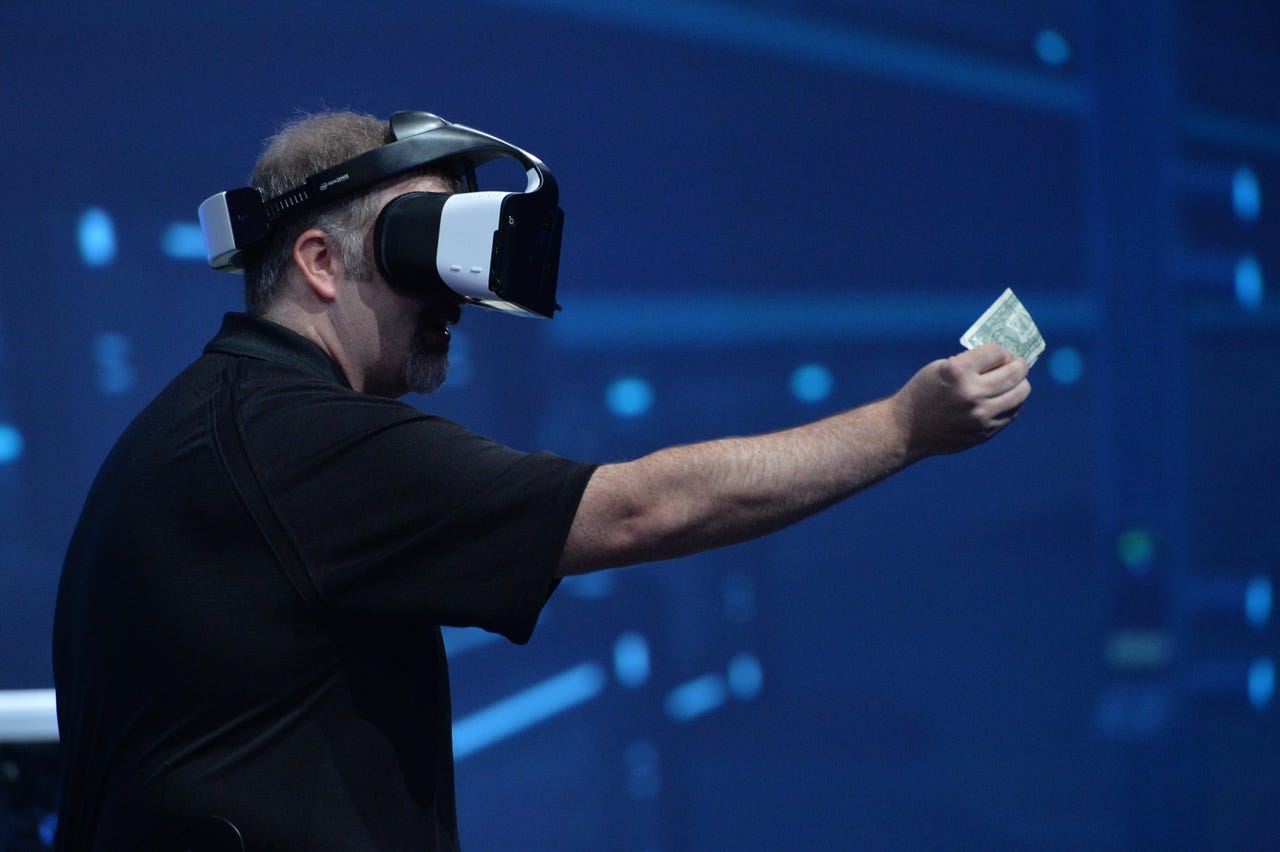IDF 2016: Intel CEO Brian Krzanich unveils Project Alloy


Intel's Craig Raymond displays the Project Alloy virtual reality headset during the Day 1 keynote at the 2016 Intel Developer Forum in San Francisco on Tuesday, Aug. 16, 2016.
At the Intel Developer Forum in San Francisco, Intel CEO Brian Krzanich introduced the concept of "merged reality" with a new product called Project Alloy.
Project Alloy "takes the cord off the virtual reality headset", said Krzanich, showcasing a self-contained virtual reality headset that contains compute, graphics, and batteries. It uses dual real-sense modules to track positioning.
The "merged reality" platform allows the user to freely move around in the virtual world while also interacting with it. "We can do that with almost any object and we can flip that - we can take the virtual world into the real world," Krzanich said.
Virtual reality, he said, has already "truly gone mainstream". Yet merged reality, he said, is "going to be a big driver in innovation because it's so different than anything else out there."
Intel is partnering with Microsoft to bring the Windows Holographic platform to Project Alloy. Additionally, Intel plans to open source the hardware next year.
Krzanich said it's not just technology that's changing -- "Intel is changing as well". He stressed four themes for the company: redefining the experience of computing, integrating visual intelligence into products of the future, making the cloud an unprecedented platform, and empowering the next generation of innovators.
All that said, Krzanich said that "powerful microprocessing remains a central engine of tehcnology and innovation." The Seventh Generation Core processor is already shipping to Intel's PC partners, he said, and will launch with new devices to consumers this fall.
Krzanich also showcased advances in RealSense visual computing. The RealSense Camera 400 is the smallest RealSense camera - just a few inches long and millimeters thick. Yet it more than doubles the number of 3D points captured, Krzanich said.
He unveiled the Yuneek Typhoon H drone, equipped with a RealSense module that allows the drone to fly while avoiding obstacles. "We have a lot of confidence in the collision avoidance capabilities of this drone," he said. Meanwhile, Project Aero is an all-in-one board that enables a developer to build their own drone and launch applications on it.
Also part of the RealSense family is Euclid - effectively a self-contained computer built for robotics. It has an atom processor, onboard communications, motion and position sensors and a battery.
Taking the discussion surrounding visual intelligence further, Krzanich introduced Elmar Frickenstein, senior vice president of electronics for BMW Group, to the stage. BMW and Intel are partnering on self-driving cars. Frickenstein rolled out on stage in the passenger seat of an autonomous vehicle. He said that BMW is bringing autonomous standards to the industry, "so all developers worldwide can create new functions on the same framework."